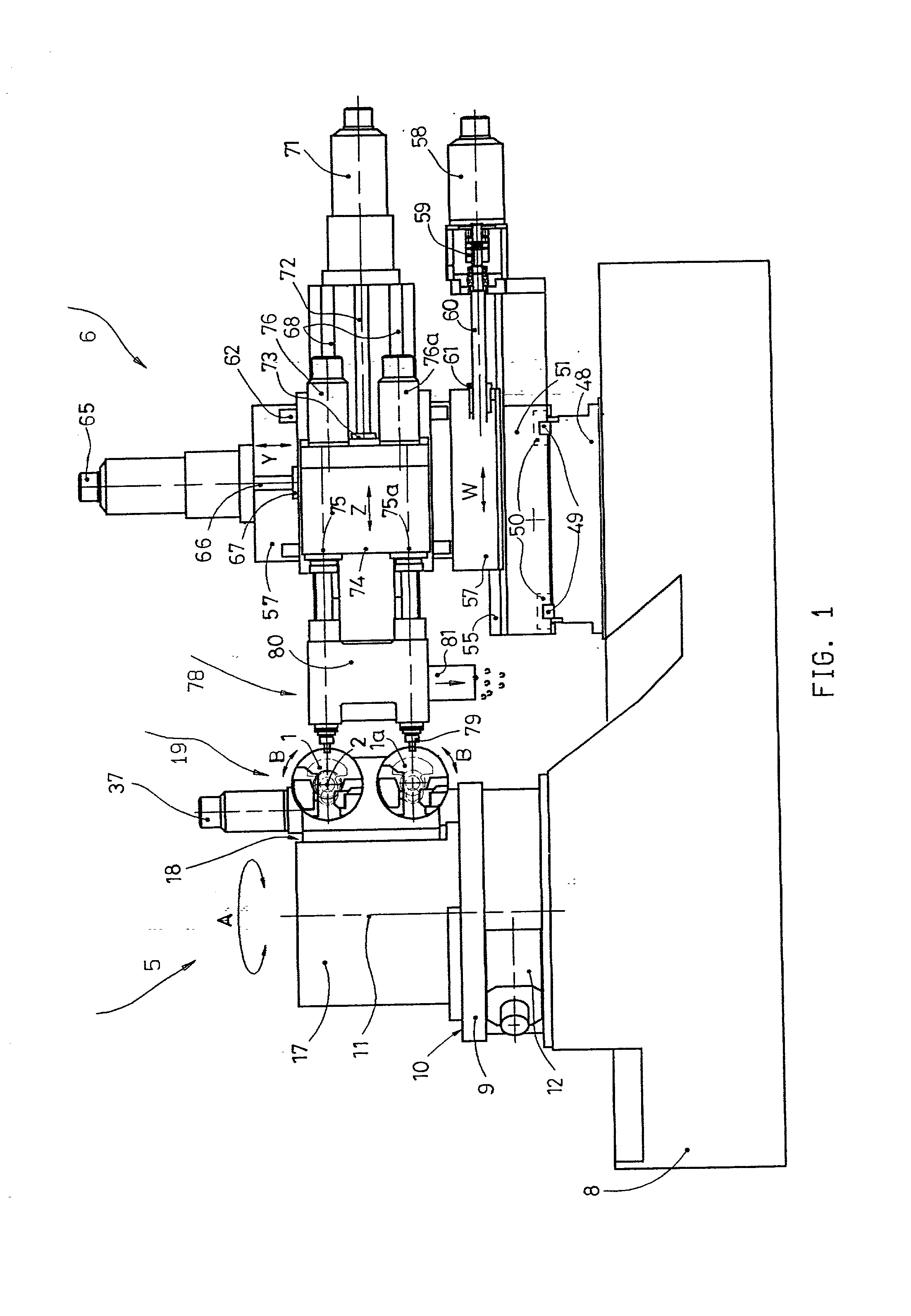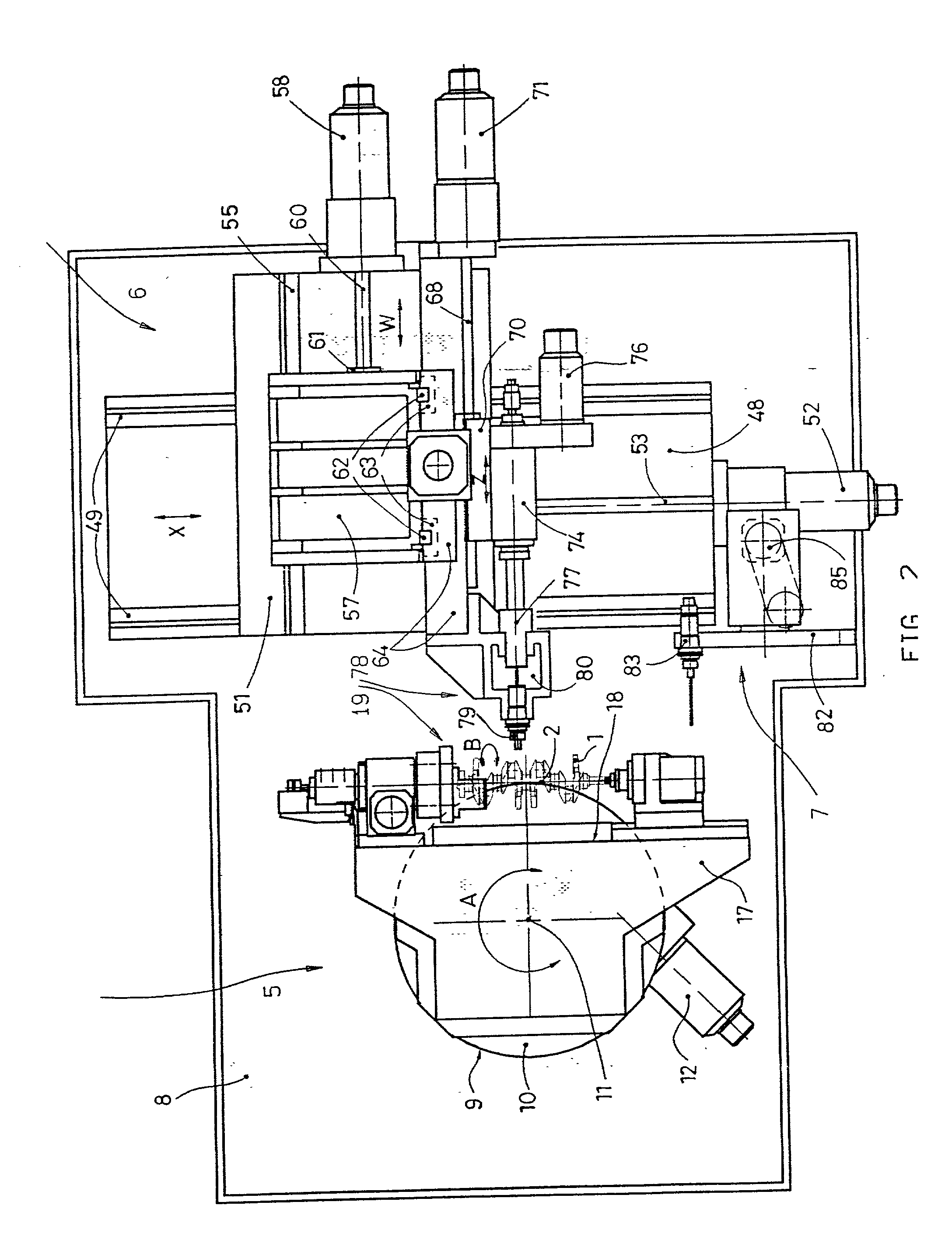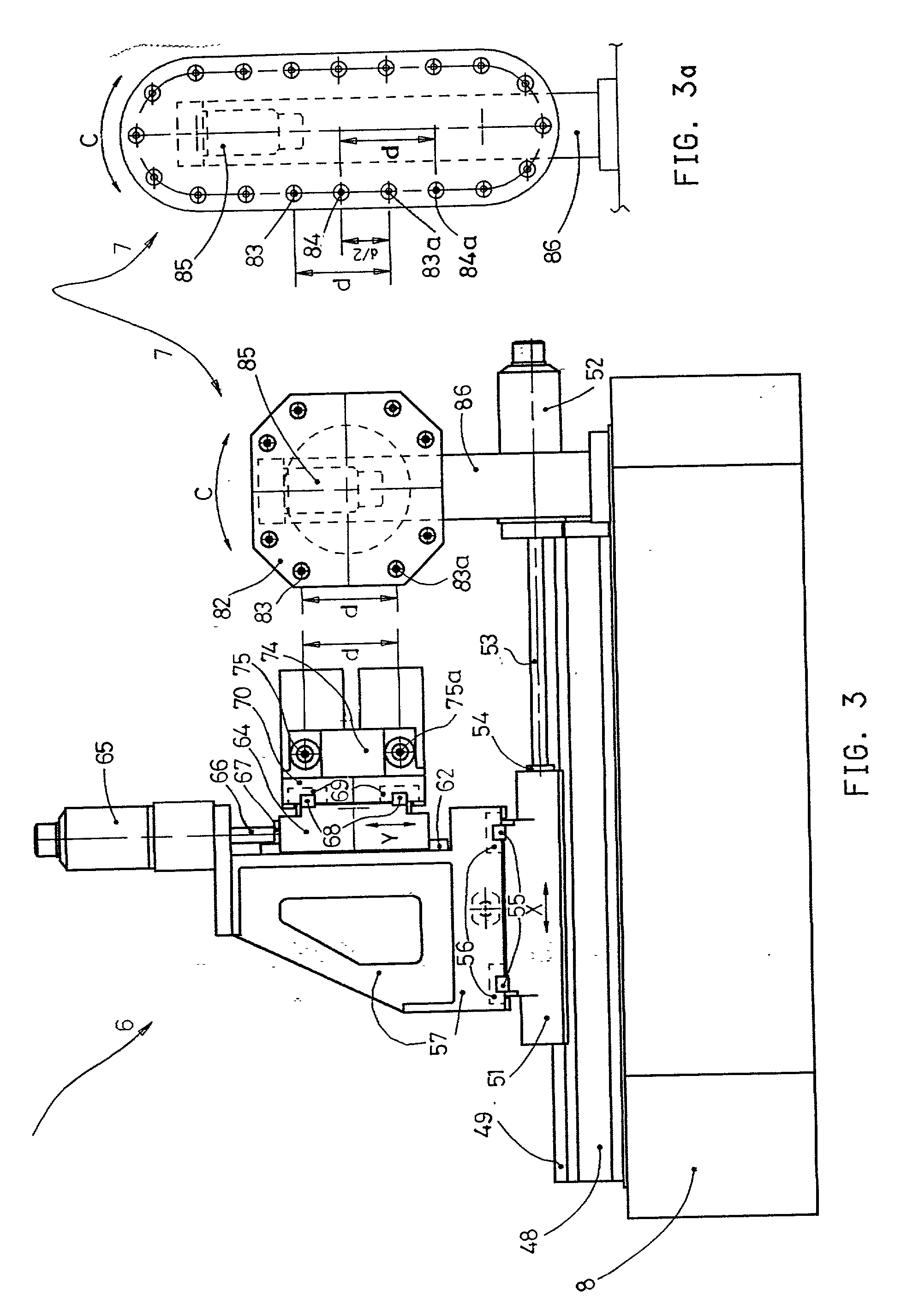There is another factor that has been changing in recent years: when a new automobile engine is launched onto the market, there are always doubts about the demand and any initial forecast may be miscalculated, either above or below the mark.
These factors cannot be tackled with multi-
station transfer units, because they are not very flexible, nor do they admit progressive investment in line with escalating production brought on by increasing demand, since these are high-cost and high-production machines from the outset.
Furthermore, the diversity of oil-hole placement, explained previously, is not possible in traditional machining centres, with their X, Y and Z axes, at least in mid-high production level.
Also, there is the problem of the additional W axis which is needed to position independently the
drill guide bushings, since this fourth axis does not exist in traditional machining centres.
There has been a previous attempt to meet this ambitious objective, but it has not produced the expected results, as it has important drawbacks which in medium-high production are a great inconvenience for an industry as demanding as the
automotive industry.
This is a serious drawback, and in subsequent loading / unloading of crankshafts, the piling up of chips will cause malfunctions which are inadmissible in mid-high production.
But with "I A" there now arises another problem and serious at that.
The collecting bin and the outlet
pipe together are fairly bulky, and if the chips are of steel, they need to be very bulky, since steel chips are sizeable and difficult to evacuate.
And to avoid this collision, one has to make do with combined collecting bin / outlet
pipe apparatuses that are insufficient for their function, giving rise to obstructions in the evacuation of chips, continual stoppages and maintenance requirements that are unacceptable in mid-high production.
This is too much to be hanging free.
In this respect, the inclinations of the crankshafts for holes to be drilled at particular angles to the longitudinal axis of the crankshaft are not precise, as they are affected by the imprecision caused by the zones hanging free, lacking any support.
In addition, the zones hanging free, acting as a counterweight, do not favour precision in inclined positioning power-controlled by the pivoting activator.
The
toothed belt, as a result of long-term use, becomes longer and this produces gaps in the gearing with the toothed pulleys, giving rise to defects in the precise circumferential positioning of the crankshafts when turning on their longitudinal axes.
The toothed belts have a limited life and tend to break, requiring their periodical replacement.
This gives rise to maintenance problems, because the transmission is situated in an area with difficult access, as it is surrounded by a large number of mechanisms that get in the way.
This makes maintenance access to these mechanisms difficult.
It also creates an obstruction in the box-frame sub-unit, affecting the
elimination of chips (see point a).
There is a further problem.
But there are further problems if there are, for example, three crankshafts, due to the difficulty of belt transmission between one activating axis (the
servomotor) and three activated axes in a line.
But if only one or more than two crankshafts are being drilled, as the machining module has to carry one or more than two bushings, the position of the quill with respect to the bushings is not balanced, resulting in problems related to parts hanging free, imbalances and various other complications affecting the stability of the guide bushings during drilling and consequently the precise positioning of the holes.
But this combination of Z moving forward while W moves back requires an interpolation between the two servoactivators to be programmed, an interpolation that complicates
programming.
This makes up a bulky and weighty sub-unit with a lot of overhang with respect to the seating of the quill unit, and it does not have the strength and stability needed to support such a sub-unit.
This poses snags and drawbacks of application, even when two crankshafts per cycle are being drilled and the quill unit is between the two bushings.
But these drawbacks are intensified when drilling just one or more than two crankshafts per cycle: the position of the quill unit with respect to the bushings adds further problems (see the first drawback in e).
With all these problems, it is evident that the quill unit is not a good solution for the W axis.
The "I A" machine does not offer these suitable characteristics or additional options.
The loading / unloading station is inflexible and precarious.
It is inflexible for automatic as well as manual loading / unloading.
This involves hazards for the operator in manual loading / unloading if the automatic function has had to be stopped temporarily because of a breakdown or for maintenance.
As these machines are situated in a line with various productive units, attended by a lengthy crankshaft transport and
handling system, working simultaneously with a number of arms on their respective production units, if there is a malfunction at one of these stations (for example the grip clamps for handling the crankshafts), then the automatic load / unload function has to be disabled, yet the overall transport and
handling system is still functioning at all the stations, and the operator manually loading and unloading at the affected station faces problems and even hazards due to the difficulty of establishing complete safety conditions because the overall
system is still operating above.
All this involves considerable bulk and which needs to fit and move in the hazardous gap between the machining module and the crankshaft-carrying sub-unit.
This is a solution that is complicated, a costly investment, awkward and not at all ideal for a flexible machine.
i) A serious problem in mid-high production is the lack of direct and easy access to all parts of the machine whenever adjustment, checking or maintenance is required.
 Login to View More
Login to View More 


